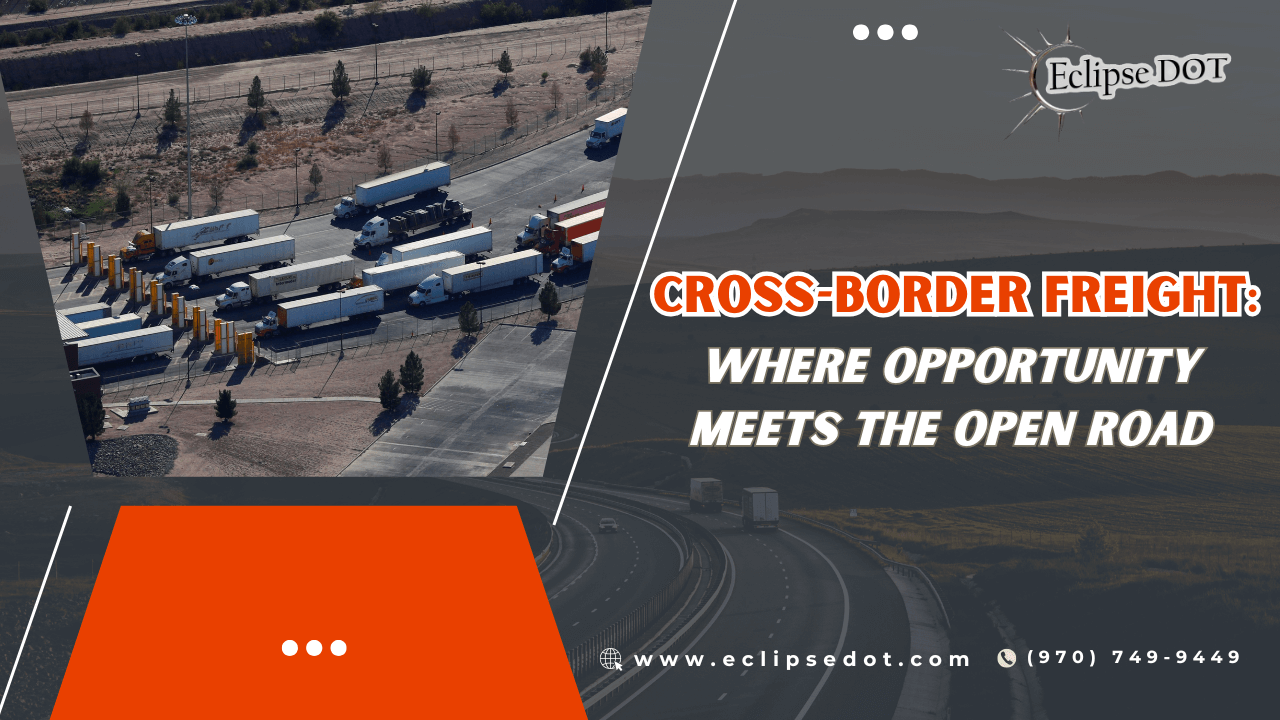Picture this: thousands of trucks rumbling across U.S.-Mexico ports every day, drivers gripping the wheel with purpose, cargo secured and ready to roll into booming cross-border markets. It’s a logistical symphony, powered by the ever-increasing freight demand spurred by nearshoring. If you’re a trucking company, this is your moment—the border is your stage, and the opportunities are endless.
“The average daily northbound full truckload crossing in Laredo is 8,640,” said Jerry Maldonado, Director of Laredo and Mexico Operations at Warren Transport. And the plot thickens: that number is expected to climb 5% to 7% each year for the next five years. In other words, if you’ve been thinking about tapping into cross-border freight, now’s the time to buckle up and hit the road.
Nearshoring: The Secret Sauce Driving Growth
What’s behind this sudden explosion in cross-border freight? Nearshoring. It’s like reshoring’s cool cousin, where companies move manufacturing closer to home, but not quite in the U.S.—instead, they head to Mexico. And why wouldn’t they? Mexico offers skilled labor, lower costs, and faster turnaround times compared to manufacturing in Asia.
The result? A manufacturing boom that’s turbocharged cross-border freight. In fact, from January to September 2024, Mexico became the U.S.’s top trading partner, handling nearly 16% of America’s foreign trade. That’s an 18.8% jump from last year—and there’s no sign of slowing down.
Infrastructure: Keeping Up with the Freight Frenzy
When you’ve got this many trucks crossing the border, you need more than just good intentions—you need solid infrastructure. Fortunately, Texas has answered the call. The Laredo World Trade Bridge is undergoing a serious glow-up, expanding from eight lanes to 18. This means less waiting around and more freight flying through.
But it’s not just Laredo in the spotlight. Ports all along the border are seeing expansions and improvements. Meanwhile, logistics giants like Schneider, C.H. Robinson, and XPO are pumping big bucks into border warehouses, truck terminals, and rail yards to keep the freight flowing smoothly. In short, the infrastructure is getting an upgrade, and fleets are primed to benefit.
How to Get in the Game: Cross-Border Freight 101
If you’re sitting there thinking, “Great, but how do I get in on this action?” don’t worry—we’ve got the playbook. A panel of industry heavyweights recently laid out exactly what fleets need to do to succeed in the cross-border freight game. It boils down to three things: how you move the freight, what paperwork you need, and who you partner with.
Freight Movement: Pick Your Strategy
There are three primary ways to move freight across the border, according to Mark Vickers, EVP and Head of International at Reliance Partners:
- Through Shipment: The Premium Package
This method is like booking a direct flight—load the cargo in the U.S. and drive it straight to its final destination in Mexico. No unloading, no swapping trailers. It’s fast and simple, but it comes with a hefty price tag. Ideal for time-sensitive loads, but not the most cost-efficient choice. - Transloading Lite: Teamwork Makes the Dream Work
Here, a U.S. carrier hauls the load to the border, where it’s inspected and transferred to a drayage partner who moves it into Mexico. A Mexican carrier then takes over and completes the delivery. This approach requires coordination and trust but offers better cost efficiency than a through shipment. - True Transloading: Freight’s Grand Relay Race
In this method, the cargo is unloaded at a warehouse on the U.S. side, reloaded onto a new trailer, and hauled across the border by a drayage partner. Once it reaches Mexico, it’s inspected again before being loaded onto another trailer for its final leg. It’s the cheapest method but involves multiple handoffs, so reliability is key.
Documentation: Don’t Leave Home Without It
If you thought freight movement was the hard part, wait until you hear about the paperwork. The carte porte is the golden ticket for cross-border operations. Think of it as a supercharged bill of lading—it includes every nitty-gritty detail about the shipment, from what’s in the load to the vehicle it’s traveling in.
“No carte porte, no crossing,” said Jason Merck, a logistics pro with years of experience in cross-border operations. The document isn’t just important—it’s legally required for customs clearance and Mexican tax collection.
Then there’s CTPAT certification (Customs-Trade Partnership Against Terrorism), which is basically the secret handshake of cross-border logistics. CTPAT-certified carriers follow strict security protocols, including barbed wire fences, fingerprint scans, and 24/7 surveillance. It’s a pain to get, but without it, you’ll struggle to find shippers or get insurance.
“Most shippers won’t even consider working with a non-CTPAT-certified carrier,” said Matt Silver, CEO of Cargado. “And if you’re not CTPAT certified, good luck getting affordable insurance.”
Partnerships: Your Ticket to Cross-Border Success
Cross-border freight isn’t a solo sport—it’s all about who you know. One of the smartest moves a U.S. carrier can make is forming interchange agreements with trusted Mexican carriers. These agreements allow U.S. trailers to cross the border and be handled by a CTPAT-certified Mexican partner.
Warren Transport has nailed this model. “Our interchange agreements ensure our trailers are handled responsibly,” Maldonado explained. “If a trailer comes back damaged or missing parts, the Mexican carrier is liable. This setup has encouraged many of our partners to implement driver training programs.”
These agreements reduce risk, improve efficiency, and build trust. And trust is the name of the game in cross-border logistics.
The Challenges: It’s Not All Smooth Sailing
Of course, no opportunity comes without its challenges. While the cross-border freight market is booming, fleets face hurdles like proposed tariffs that could increase costs and reduce demand. Recent rail delays have also caused bottlenecks, particularly in agricultural supply chains, as grain shuttle trains were temporarily halted.
But for fleets willing to invest in the right infrastructure, certifications, and partnerships, the rewards far outweigh the risks. As the saying goes, no risk, no reward—and in this case, the reward could be massive.
Final Mile: The Opportunity Awaits
Cross-border freight is booming, and it’s only getting bigger. Nearshoring is driving demand, infrastructure is improving, and the opportunities are ripe for fleets willing to dive in. Yes, it takes effort—there’s paperwork to handle, partners to trust, and processes to master—but the payoff? A steady flow of freight and a growing bottom line.
“Any carrier working with CTPAT-certified partners and solid interchange agreements should feel confident,” Vickers said. “They’ve got all the right tools—now it’s about making it happen.”
So, what are you waiting for? The road is open, the freight is moving, and the opportunity is calling. It’s time to gear up, rev those engines, and ride the cross-border wave to success.
Gain exclusive access to our CDL & DOT Compliance articles with a trial at DOTDocs.com. And don’t forget to claim your FREE micro audit at THE ECLIPSE DOT MICRO AUDIT. Ready for seamless operations? Discover the difference today!


